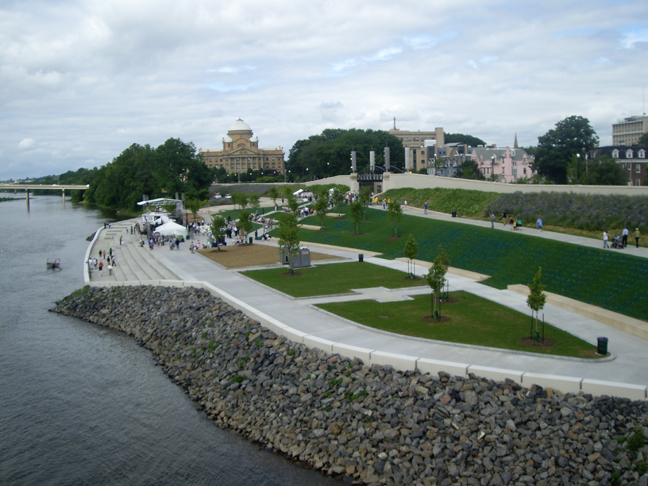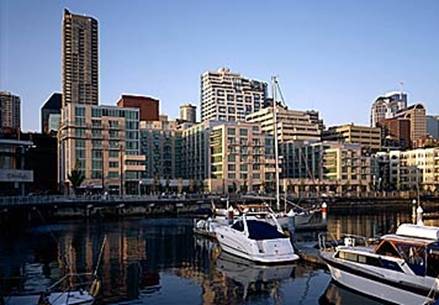New York City's Winners were:
- The Port Authority Ferry Terminal at the World Financial Center, New York. Contract: Donald Fram AIA, chief architect, The Port Authority of New York and New Jersey, 2 Gateway Center, Newark, NJ 07012 Phone: 973/565-7690. E-mail: dfram@panynj.gov
- West Harlem Piers Park, W. 129th to W. 133rd Sts. and 12th Ave., New York. Contract: Barbara Wilks, W Architecture and Landscape Architecture, 127 W. 25th St./12th floor, New York 10001. Phone: 212/981-3933. E-mail: bwilks@w-architecture.com
- Waterfront Zoning T ext Amendment, Department of City Planning, New York. Contact Amanda M. Burden, commissioner, Department of City Planning, 22 Reade St./2W, New York 10007. Phone: 212-720-3320. E-mail: cgrossm@planning.nyc.gov
- Brooklyn Bridge Park 2005 Master Plan: A Framework for Design, Brooklyn, NY Contact: Michael Van Valkenburgh, principal, Michael Van Valkenburgh Associations Inc., Landscape Architects PC, 16 Court St./12th floor, Brooklyn, NY 11241. Phone: 718/243-2044. E-mail: michael@mvvainc.com
Top Honor for 2009 was for the Confluence Project at seven historic sites along the Columbia River in Washington State and Oregon. Three of the projects are built and a fourth is to have its ground-breaking shortly. The artist Maya Lin, working with other artists and designers, is striving for public art projects that connect the natural world and the built environment, at sites rich with Native American history, as well as stopping points on the remarkable Lewis and Clark exploration over 200 years ago. Contacts: Jane Jacobsen, executive director, Confluence Project, 1701 Broadway/No. 144, Vancouver, WA 98663. Phone: 360/693-0123. E-mail: jane@confluenceproject.org. Johnpaul Jones, principal, Jones and Jones, Architects and Landscape Architects, 105 S. Main St./No. 300, Seattle, WA 98104-3437. Phone: 206/624-5720. E-mail: jpjones@jonesandjones.com

Aerial view of the Land Bridge, photo credit: The Confluence Project.

Serving the Waterfront Center's 23rd Excellence on the Waterfront jury were
- Mike Burke, jury chair, attorney, King Hershey PC and counsel, Port Authority of Kansas city, Kansas City, MO.
- Fran Hegler, senior direction/development manager, AECOM, San Francisco, CA.
- Jeff Shelden, senior coastal engineer, Moffatt and Nichol, Raleigh, NC.






